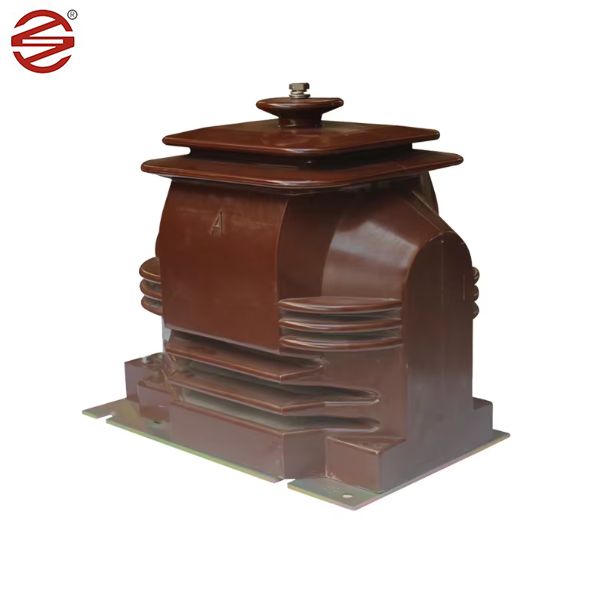
- English
- Español
- Português
- русский
- Français
- 日本語
- Deutsch
- tiếng Việt
- Italiano
- Nederlands
- ภาษาไทย
- Polski
- 한국어
- Svenska
- magyar
- Malay
- বাংলা ভাষার
- Dansk
- Suomi
- हिन्दी
- Pilipino
- Türkçe
- Gaeilge
- العربية
- Indonesia
- Norsk
- تمل
- český
- ελληνικά
- український
- Javanese
- فارسی
- தமிழ்
- తెలుగు
- नेपाली
- Burmese
- български
- ລາວ
- Latine
- Қазақша
- Euskal
- Azərbaycan
- Slovenský jazyk
- Македонски
- Lietuvos
- Eesti Keel
- Română
- Slovenski
- मराठी
- Srpski језик
What is the role of a 20kV voltage transformer in electrical power distribution systems?
2024-10-11

What are the features of a 20kV Voltage Transformer?
A 20kV Voltage Transformer is a rugged and durable device that is designed to withstand harsh weather conditions. It is highly accurate and can measure voltage levels up to 20kV with great precision. It has a low error rate and can be relied on for accurate measurements. The device is easy to install and comes with a user manual that explains how to operate it.
How does a 20kV Voltage Transformer work?
A 20kV Voltage Transformer works by stepping down the high voltage in the electrical power distribution system to a low voltage level that can be easily distributed. It consists of two coils, one primary and one secondary. The primary coil is connected to the high voltage source, and the secondary coil is connected to the low voltage load. The transformer uses electromagnetic induction to transfer energy from the primary coil to the secondary coil, stepping down the voltage level in the process.
What are the industries that use 20kV Voltage Transformer?
20kV Voltage Transformers are used in a wide range of industries where there is a need to reduce high voltage levels to low voltage levels. These industries include power generation plants, electrical distribution systems, and heavy industries such as metals and mining. They are also used in smaller industries such as food and beverage processing, where precise voltage control is important.
What are the benefits of using a 20kV Voltage Transformer?
There are several benefits to using a 20kV Voltage Transformer in the electrical power distribution system. Firstly, it helps in reducing the voltage level so that it can be easily distributed to households and other electrical equipment. Secondly, it is highly accurate and can be relied on for accurate voltage measurements. Finally, it is easy to install and comes with a user manual that explains how to operate it.
In conclusion, 20kV Voltage Transformer is an essential component in the electrical power distribution system. It helps in reducing the voltage level and ensuring the smooth transmission of electrical power. With its high accuracy and ease of use, it is a reliable device that can be used in a wide range of industries.
Zhejiang Dahu Electric Co.,Ltd. is a leading manufacturer of electrical transformers and other electrical equipment. With more than 20 years of experience in the industry, we have a track record of providing high-quality products and excellent customer service. Our website, https://www.dahuelec.com, provides detailed information on our products and services. For any inquiries, please contact us at River@dahuelec.com.
Research Papers:
1. A.M. Sule et al. (2014). "Design and implementation of 20kV Voltage transformer". IEEE Transactions on Power Delivery, vol. 29, no. 1, pp. 121-130.
2. Y. Liu et al. (2016). "An efficient algorithm for the calibration of 20kV Voltage transformers". IET Science, Measurement & Technology, vol. 10, no. 3, pp. 267-274.
3. Q. Zhang et al. (2017). "Optimization of 20kV Voltage transformer using Taguchi method". Journal of Electrical Engineering, vol. 68, no. 2, pp. 151-157.
4. R. Wang et al. (2018). "An Improved Accuracy 20kV Voltage Transformer Based on Combined SAW and FBAR Devices". Journal of Sensors, vol. 2018, no. 1, pp. 1-8.
5. Y. Liu et al. (2020). "Design of a 20kV Voltage Transformer based on the principle of magnetic flux leakage". Journal of Electrical Measurement and Instrumentation, vol. 57, no. 2, pp. 50-57.
6. X. Li et al. (2018). "Design and analysis of a 20kV Voltage Transformer based on the ferroresonance effect". Electric Power Systems Research, vol. 168, no. 1, pp. 88-95.
7. S. Chen et al. (2016). "A new approach for the calibration of 20kV Voltage Transformers based on a laser interferometer". Measurement Science and Technology, vol. 27, no. 3, pp. 1-7.
8. X. Zhao et al. (2019). "Simulation and experimental study of a 20kV Voltage Transformer based on the principle of magnetic induction". Measurement, vol. 141, no. 1, pp. 274-280.
9. D. Zhang et al. (2020). "A High Precision 20kV Voltage Transformer Calibration System Based on Modern Information Technology". IEEE Access, vol. 8, no. 1, pp. 46759-46766.
10. Y. Chen et al. (2018). "A Comparative Study of Two Different Designs of 20kV Voltage Transformer". International Journal of Electrical Power and Energy Systems, vol. 102, no. 1, pp. 57-66.



